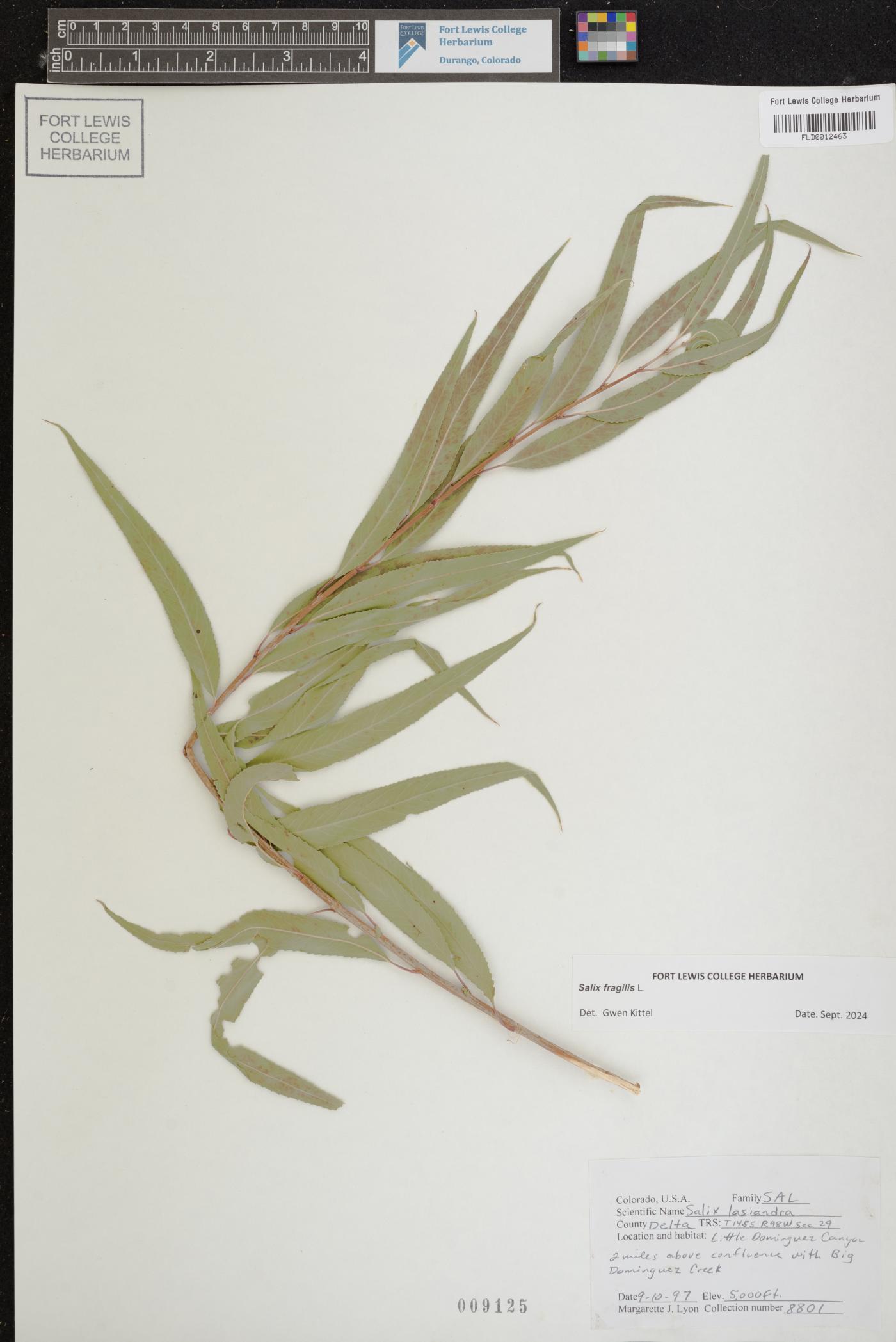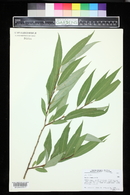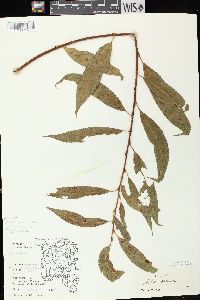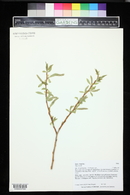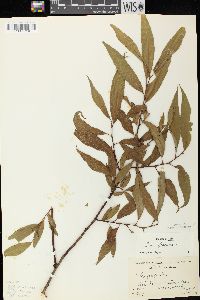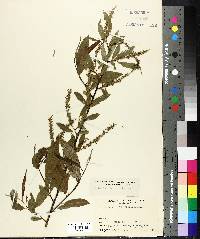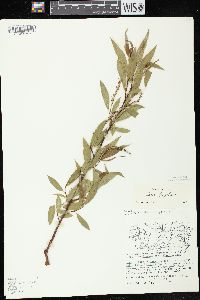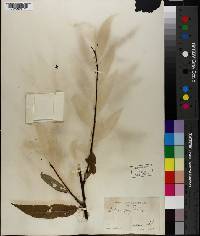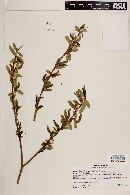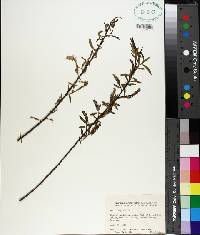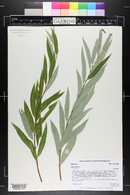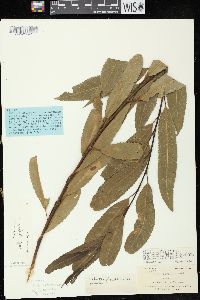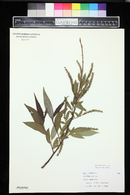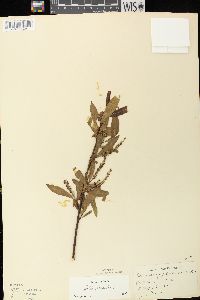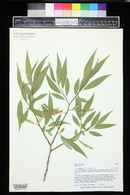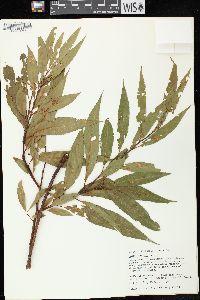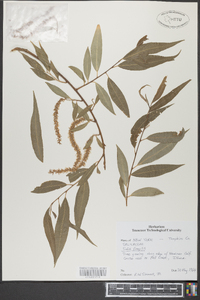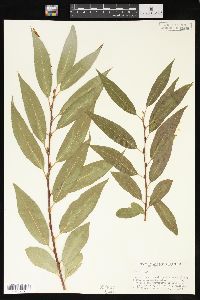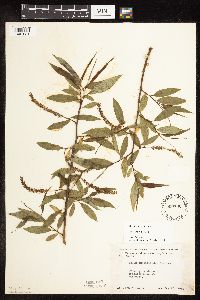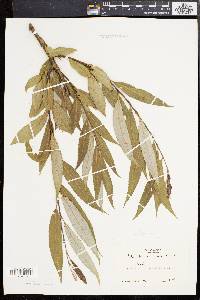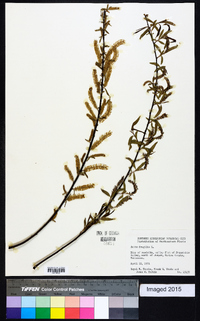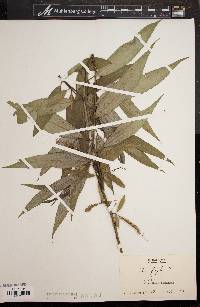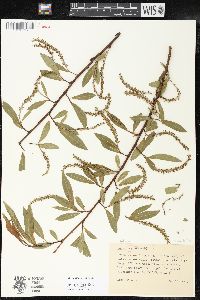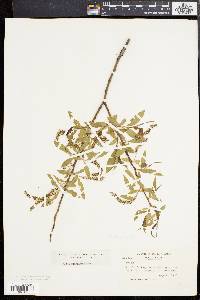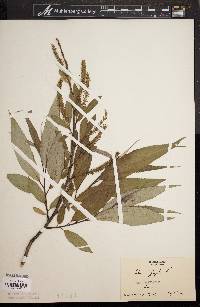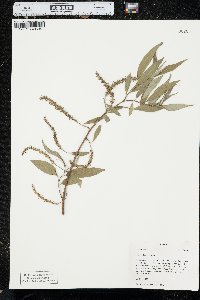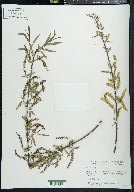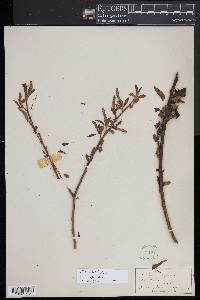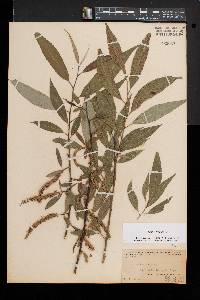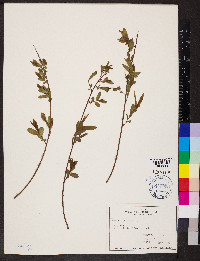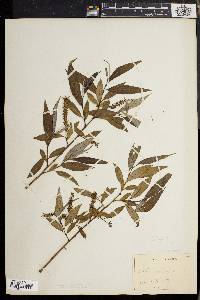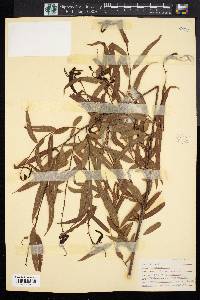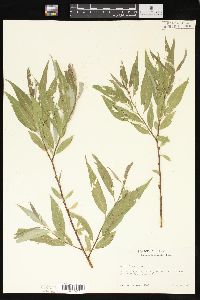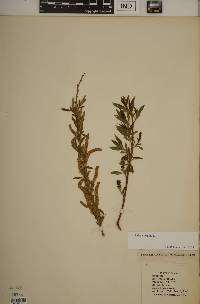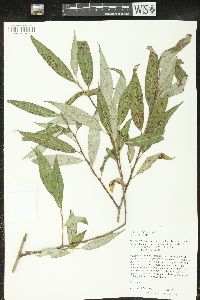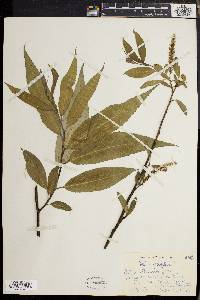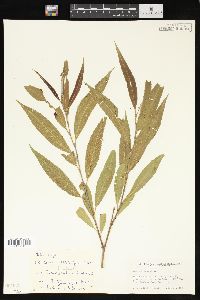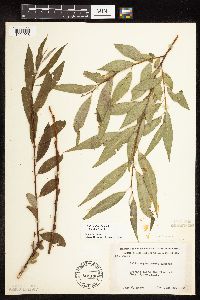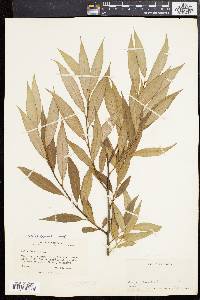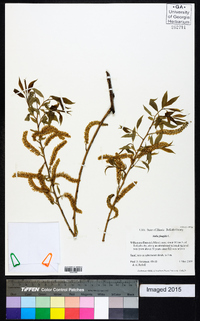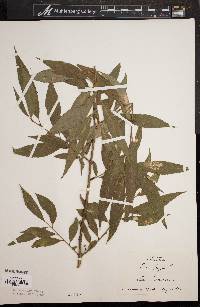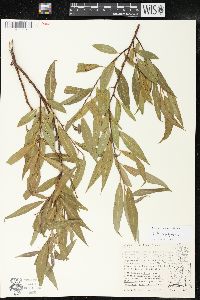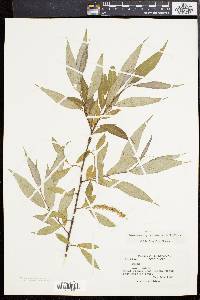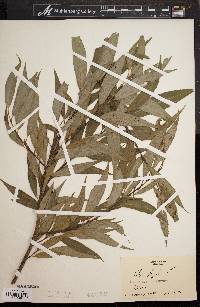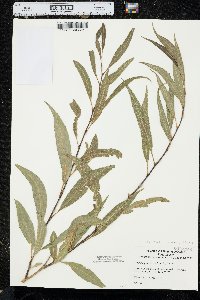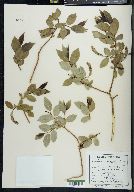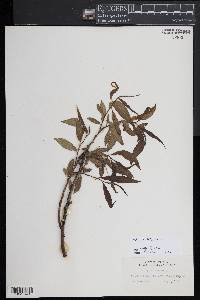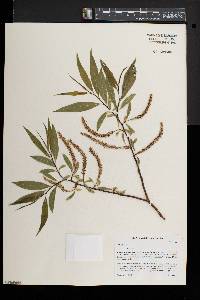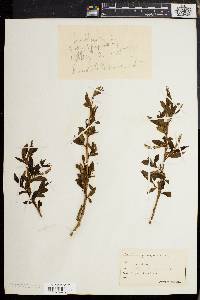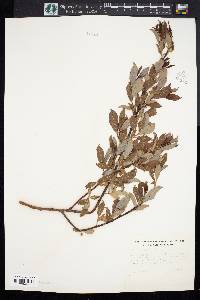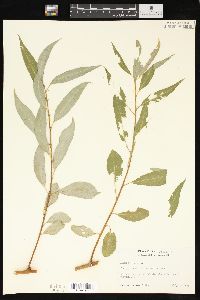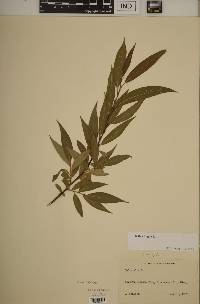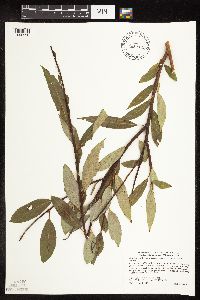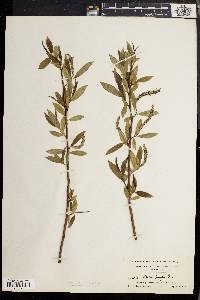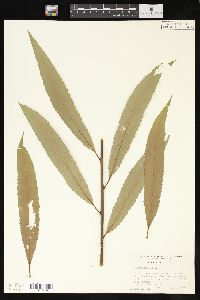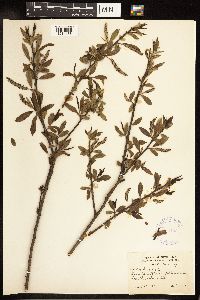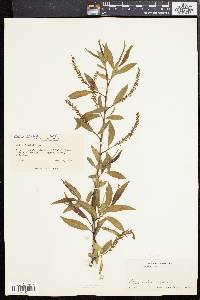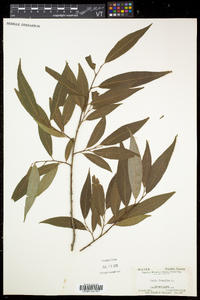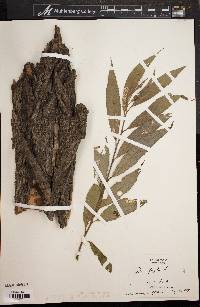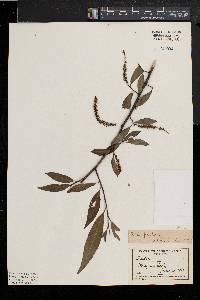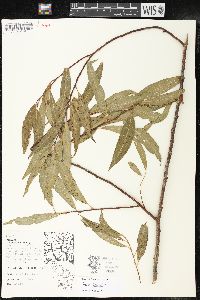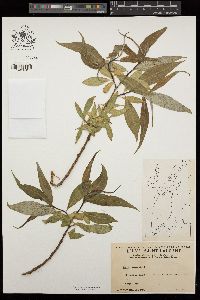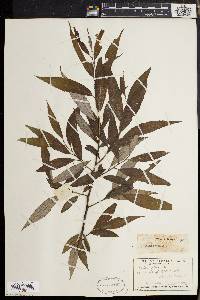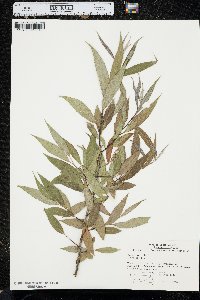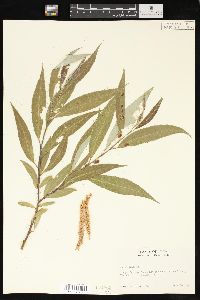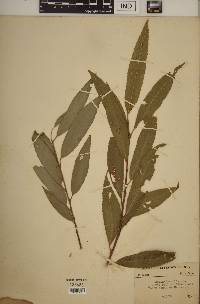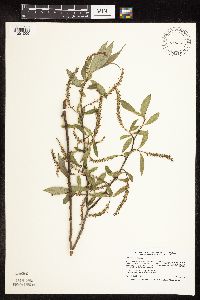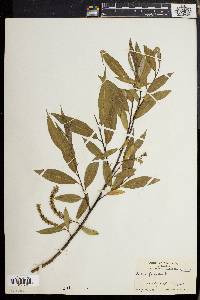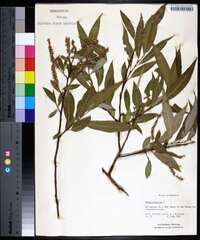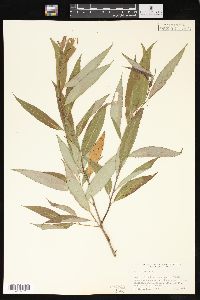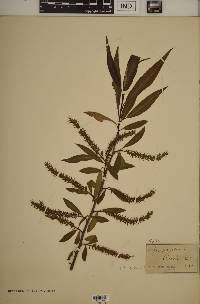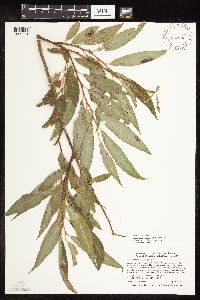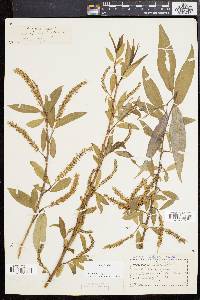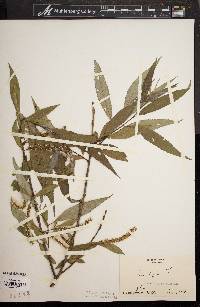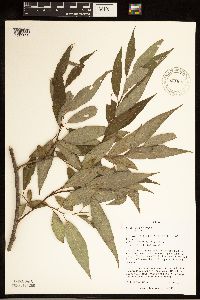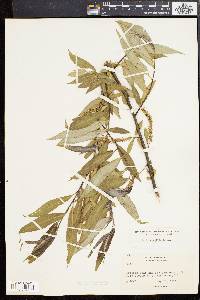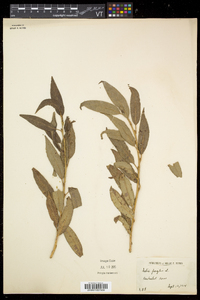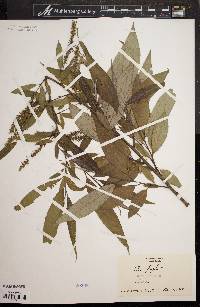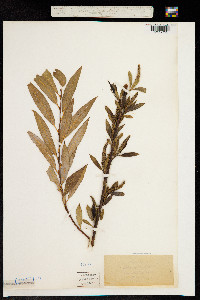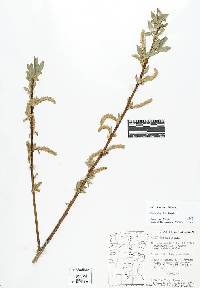Salix × fragilis
|
|
|
|
Family: Salicaceae
Crack Willow
[Salix fragilis L., moreSalix russelliana Sm., Salix viridis Fries, Salix x fragilis L.] |
Medium-sized to large tree 15 - 30 m tall, trunk diameter 0.8 - 2 m Leaves: alternate, on stout, 1 - 2 cm long, sometimes glandular leafstalks (two glands at the base of leaf), glossy green above, more or less waxy (glaucous) beneath, 8 - 16 cm long, 1.5 - 3.5 cm wide, lance-shaped with a tapering base and long-pointed tip, irregularly saw-toothed, thin, and firm. The teeth are gland-tipped. Flowers: either male or female, borne on separate trees (dioecious) in cylindrical catkins. The catkin is 2 - 6 or more cm long, hairy, and it grows on a short, leafy stalk. Female catkin loosely flowered with pale yellow scales. Ovary narrowly conical. Male catkin densely flowered with pale yellow scales. Stamens two (sometimes three), with golden-yellow anthers. Fruit: a capsule, in elongated clusters to 12 cm long, short-stalked, brown, 4 - 6 mm long, and flask-shaped. Seeds have long, white, silky hairs attached. Bark: dark gray, dull, thick, and smooth on young trees, becoming rough and deeply furrowed with narrow, scaly ridges. Twigs: slender and shiny yellowish green, becoming dark red to greenish brown, and shiny with a flaky surface layer. The twigs snap easily and cleanly at the base. Buds: bright reddish brown, 3 - 7 mm long or longer, conical, pointed, and appressed to the stem. Terminal bud absent. Form: broadly conical and open with stiffly ascending branches. Similar species: In the Chicago Region, Salix fragilis differs from most other willows by having irregularly saw-toothed, hairless leaves that exhibit a waxy coating beneath and are not revolute (rolled downward along the margins). Also, its twigs snap easily and cleanly at the base. Salix amygdaloides is similar but typically has broader leaves. The much smaller S. petiolaris has shorter, narrower leaves. Flowering: late April to May, with the leaves Habitat and ecology: Introduced from Eurasia. In the Chicago Region, Salix fragilis escapes cultivation and occurs in degraded areas and abandoned habitations. It has also been found in wooded ravines, along rivers, along railroads, in ditches, and in sandy areas near Lake Michigan. Occurence in the Chicago region: non-native Notes: The wood is used for crates, boxes, polo balls, artificial limbs, pulp, veneer, and furniture. It was used in colonial times for charcoal. Locally, most of the trees named Crack Willow are probably hybrids between it and Salix alba, called S. x rubens. Etymology: Salix is the Latin word for willow. Fragilis means brittle, which is in reference to the twigs. Author: The Morton Arboretum Tree to 20 m, the trunk to 1 m thick; twigs stout, ascending or spreading, greenish to dark red, glabrous or slightly hairy, very brittle at base; stipules small, semi- cordate, caducous; lvs narrowly lanceolate to lanceolate, 7-12(-15) נ1.5-3.5 cm, more coarsely and remotely serrate than in no. 7 [Salix alba L.], with 4-6 glandular teeth per cm of margin, dark green above, ±glaucous beneath, glabrous or nearly so at maturity; petioles 7-20 mm, glabrous, glandular above at the tip; catkins with the lvs, 4-8 cm, on peduncles 1-3(-5) cm with 2-5 small lvs, the scales greenish-yellow, crisp-villous, deciduous; stamens 2; frs narrowly conic, 4-5.5 mm, glabrous, on a pedicel 0.5-1 mm; styles 0.3-1 mm; 2n=38, 76, 114. Native of Europe, often escaped from cult. in our range. Gleason, Henry A. & Cronquist, Arthur J. 1991. Manual of vascular plants of northeastern United States and adjacent Canada. lxxv + 910 pp. ©The New York Botanical Garden. All rights reserved. Used by permission. From Flora of Indiana (1940) by Charles C. Deam This European willow has been freely planted throughout the state and is found more commonly as an escape, I believe, because the branchlets are very easily broken off by wind and ice and scattered where they are covered with soil and easily propagate. I recall the ingenious use of this species by a farmer in Wayne County who, about 1857, had planted several rows of the trees and spaced them close and in zigzag rows across a creek bottom. When I asked why he so planted them he told me that it was to catch the rails and wheat that came down the stream during floods.
Deam (1932): This species and the white willow (S. alba) are introduced from Europe and extensively grown for the production of charcoal to use in powder making. |

